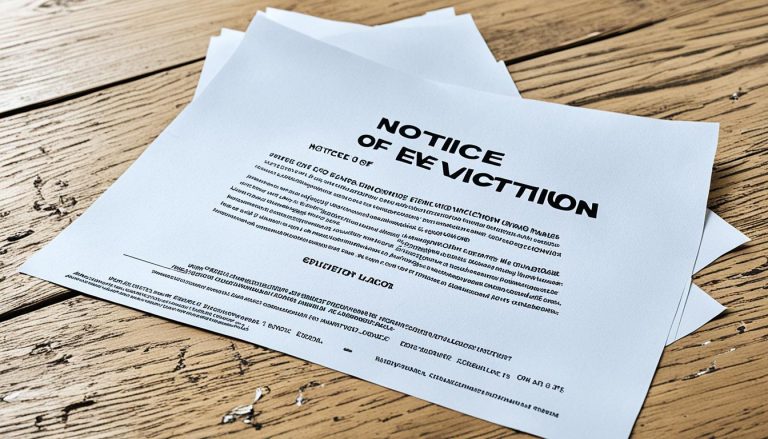Relocating to a different council borough in the UK can be a complex process, but understanding the options available can help make the transition smoother. A council house transfer is when your local council or housing association offers you a new home within their property portfolio, or nominates you for a property in another borough. This is distinct from a tenancy exchange, where you find another council or housing association tenant to swap homes with.
Most council and housing association tenants are eligible to apply for a council housing transfer, but the process often depends on your specific reasons for wanting to move. You can ask your current landlord to nominate you for a home in the council area you’d like to relocate to, and then contact the housing office or your housing association to begin the application, typically by filling out a form or registering online.
Understanding the council rehousing process, the factors that can qualify you for an urgent transfer, and the alternatives like mutual exchanges are all important considerations when planning a move to another council borough. This guide will explore the key steps and considerations to ensure a successful inter-borough council move or changing borough residence.
Understanding Tenancy Transfers
A council house transfer or council housing transfer is a process where your local council or housing association offers you a different property within their portfolio. This is distinct from a tenancy exchange, where you swap homes with another council or housing association tenant. Fortunately, most council and housing association tenants in the UK are eligible to apply for a inter-borough council move or council rehousing process.
What is a Tenancy Transfer?
A tenancy transfer involves your current landlord, whether a council or housing association, providing you with the opportunity to move to a different property under their management. This could mean transferring to a home in a different council borough or even a property owned by a separate housing association. The key benefit of a tenancy transfer is that it allows you to relocate without having to find and coordinate a mutual exchange with another tenant.
Eligibility for Tenancy Transfer
Eligibility for a council property swap or council tenant relocation is typically quite broad, with most council and housing association tenants able to apply. The specific requirements may vary depending on your local authority, but the process generally involves contacting your current landlord, who can then nominate you to the council area you wish to move to. From there, you’ll usually need to complete an application form or register your interest online through your council housing exchange or transferring council tenancy system.

Reasons for Transferring to Another Borough
Council and housing association tenants in the UK may seek to transfer to another borough for various reasons, including overcrowding, under-occupancy, health or disability needs, or relocation requirements. The council rehousing process, council property swap, and council tenant relocation can all be viable options to address these specific housing needs.
Overcrowding or Under-Occupancy
If your current council or housing association property has become too small due to a growing family, or if you are living in a home that is larger than your needs, a council housing exchange or council house transfer may be the solution. The relocating council housing process can help facilitate a move to a more appropriately sized property, ensuring your living situation better matches your household requirements.
Health or Disability Needs
For tenants with specific health or disability needs, a moving to a different borough or changing borough residence may be necessary to access more suitable accommodation. The inter-borough relocation and borough to borough move options can allow tenants to find a council or housing association property that better accommodates their requirements, such as ground-floor living or adaptations for mobility challenges.
Relocation Needs
Circumstances such as a new job, family commitments, or other personal reasons may necessitate a relocating council property or council housing transfer to a different borough. The council rehousing process can facilitate this move, ensuring tenants are able to find appropriate housing in their desired location and maintain their council or housing association tenancy.
how to transfer to another council borough
If you are a council or housing association tenant in the United Kingdom and need to relocate to a different council borough, the process typically involves contacting your current landlord and applying for a council housing exchange or council house transfer. This can be done by applying for council transfer directly with your council’s housing office or your housing association.
Contacting Your Current Council or Housing Association
The first step is to reach out to your current landlord, whether that’s your local council or a housing association. Explain your reasons for wanting to transfer to another council borough, such as needing more space, better accessibility, or relocating for work or family reasons. Your landlord can then provide you with the necessary information and guidance on how to transfer to another council borough online or from council to another borough.
Applying for a Transfer
Once you have contacted your landlord, you will typically need to fill out an application form or register your interest in a council house transfer process. This application will outline your reasons for the transfer and any supporting evidence you can provide, such as medical documents or proof of a job offer in the new borough.
Providing Supporting Documentation
Depending on the reasons for your applying for council transfer, you may need to submit additional documentation to support your application. This could include medical reports, evidence of domestic abuse, or proof of employment or education in the new borough. Your landlord will be able to advise you on the specific requirements.

Urgent Transfers and Management Transfers
In certain pressing circumstances, your council or housing association may offer to relocate you more swiftly. This is known as an urgent or management transfer, and it typically grants you additional priority on waiting lists.
Circumstances Qualifying for Urgent Transfer
Your council or housing association could expedite your move if you are facing a highly urgent situation, such as experiencing domestic abuse, violence, harassment, or intimidation. Additionally, if you are part of a witness protection scheme related to antisocial behaviour or criminal cases, you may also qualify for an urgent transfer.
Domestic Abuse and Secure Tenancies
Domestic abuse is a serious matter that the authorities take very seriously. If you are a council or housing association tenant facing domestic abuse, you may be eligible for a secure tenancy, which can provide you with additional protection and priority for a quicker relocation to a safer home. Reaching out to your landlord and discussing your situation is crucial in these cases.

Waiting Lists and Bidding Systems
The council rehousing process and council housing transfer can be a lengthy endeavour, as there is often a shortage of council and housing association homes available in most areas. Tenants seeking to relocate to another borough through a council property swap or inter-borough relocation may have to wait even longer, particularly if they require larger, sheltered, or specially-adapted properties.
Understanding the Waiting Process
The waiting time for a council house transfer or relocation can vary significantly based on factors such as your housing needs, the demand for properties in the target borough, and the availability of suitable units. It’s important to ask your local council for an estimate on the expected timeframe to get a better understanding of the process. Additionally, be prepared to remain flexible in your preferences, as this can increase your chances of securing a council housing exchange or transfer more quickly.
Choice-Based Letting Schemes
Many councils and housing associations operate choice-based letting (CBL) schemes, which allow tenants seeking to move to a different borough or change their residence to bid on available properties. This process involves registering your interest and preferences, and then actively bidding on properties that match your needs. Understanding how the CBL system works in your area can help you navigate the council house transfer process more effectively and potentially shorten the waiting time for a successful move.

| Key Factors Affecting Council Housing Transfer Waiting Times | Average Timeframe |
|---|---|
| Property Size Requirements (e.g., 1-bedroom vs. 3-bedroom) | 6 months to 2 years |
| Demand for Properties in Target Borough | 3 months to 5 years |
| Availability of Suitable Adapted or Sheltered Homes | 1 year to 10 years |
| Urgency of the Transfer Request (e.g., domestic abuse, severe medical needs) | Immediate to 6 months |
Alternatives: Mutual Exchanges
If you’re a council or housing association tenant looking to move to a different borough, a mutual exchange can be a viable alternative to the traditional council transfer process. A mutual exchange, also known as a “council house swap,” allows you to swap your current council or housing association property with another tenant in the area you’d like to move to.
Eligibility for Mutual Exchanges
Most council and housing association tenants are eligible to participate in a mutual exchange, provided they obtain the necessary approval from their current landlord. This approval typically involves ensuring the proposed exchange property meets the landlord’s requirements, such as size and suitability for the tenant’s needs.
Finding an Exchange Partner
The first step in arranging a mutual exchange is to find another tenant who is interested in swapping properties. You can use online platforms, such as Mutual Exchange or Home Swap Direct, to search for potential exchange partners in your desired council borough. Alternatively, you can reach out to your local council or housing association for assistance in finding a suitable exchange match.
Seeking Landlord Approval
Once you’ve identified a potential exchange partner, you’ll need to submit a formal request to both your current landlord and the landlord of the property you wish to move into. They will assess the proposed exchange to ensure it meets their criteria, such as council property swap or council housing exchange requirements. If approved, you can proceed with the exchange, which can be a quicker and more flexible alternative to the traditional how do i move from one borough to another? or can a council tenancy be transferred? process.
Conclusion
In summary, council and housing association tenants in the UK have various options to transfer to another council borough, either through a direct tenancy transfer or by arranging a mutual exchange with another tenant. The process involves contacting your current landlord, providing supporting documentation, and potentially going on a waiting list or bidding system. Urgent transfers may be available in certain circumstances, such as domestic abuse.
While the council housing transfer process can take time, understanding the eligibility requirements and application steps is crucial. By navigating the system effectively, tenants can increase their chances of securing a move to their desired council borough, whether it’s due to overcrowding, disability needs, or relocation requirements. Staying informed and persistent throughout the application process can significantly improve the outcome.
Ultimately, the council housing transfer system offers a valuable opportunity for tenants to find a new home that better suits their needs and preferences. By exploring all the available options and following the necessary procedures, tenants can take an important step towards improving their living situation and enhancing their quality of life.
FAQ
What is a Tenancy Transfer?
A tenancy transfer is when your council or housing association offers you a different council or housing association home or nominates you for a home with a different council or housing association. It’s different from a tenancy exchange where you find another council or housing association tenant to swap your home with. Most council and housing association tenants can apply.
Who is eligible for a Tenancy Transfer?
Most council and housing association tenants can apply for a tenancy transfer.
What are the main reasons for transferring to another borough?
The main reasons include overcrowding or under-occupancy, health or disability needs, and relocation needs.
How do I apply for a Tenancy Transfer?
You can ask your landlord to nominate you to the council area you want to move to. Contact your council’s housing office or your housing association to apply, usually by filling in a form or registering online.
When can I get an Urgent or Management Transfer?
Your council or housing association could offer to move you quickly if it is very urgent, for example, if you are experiencing domestic abuse, violence, harassment or intimidation, or if you are part of a witness protection scheme in antisocial behaviour or criminal cases.
How long does a Tenancy Transfer take?
Tenancy transfers can take a long time, as there is a shortage of council and housing association homes in most areas. You often have to wait even longer for larger homes, sheltered or adapted properties.
What is a Mutual Exchange?
You can also apply to swap your home with someone else who rents a council or housing association home. This is called a ‘mutual exchange’. You’ll need to get your landlord’s permission to move and meet any requirements that your new landlord has.






